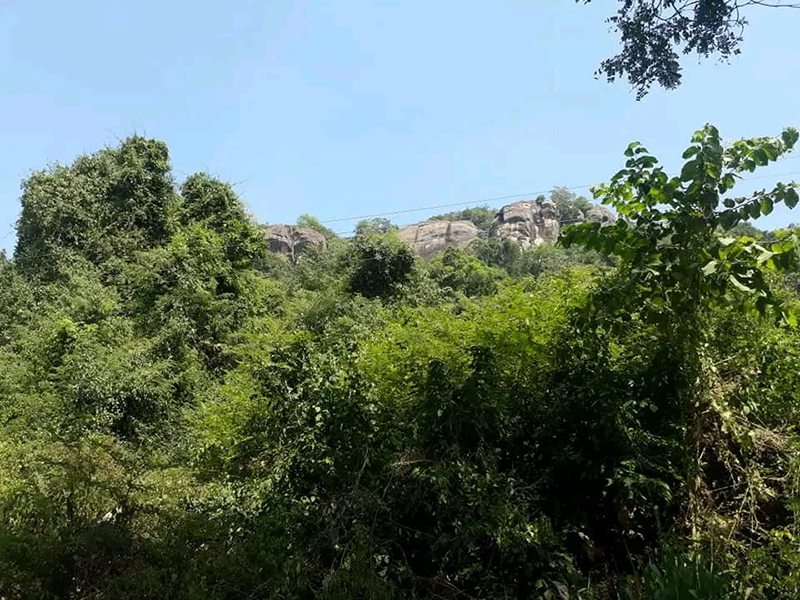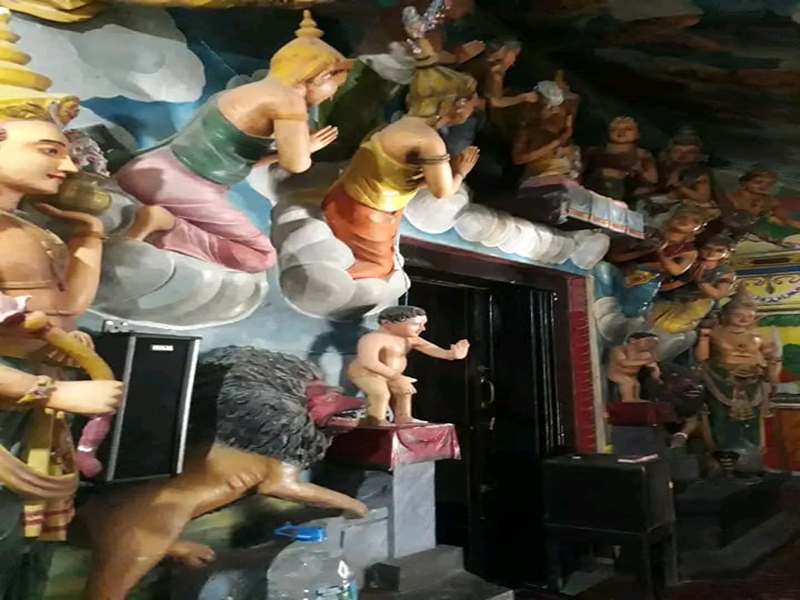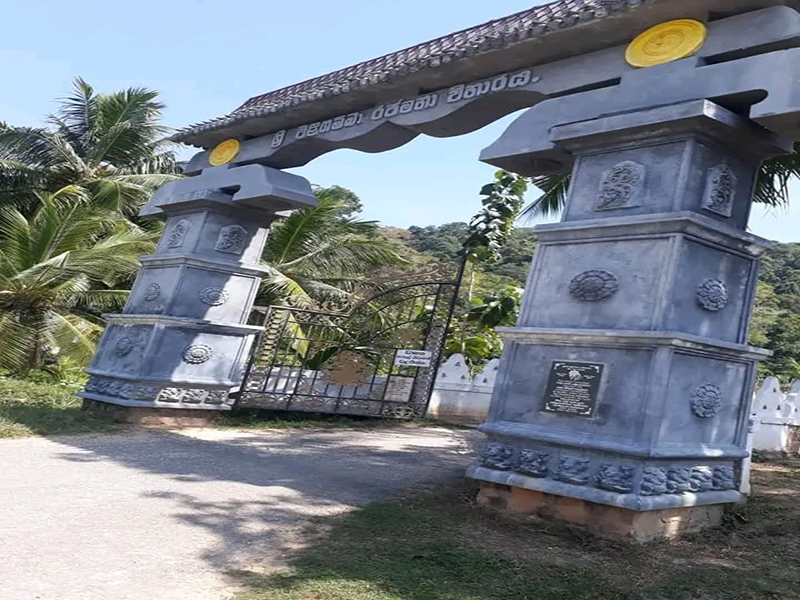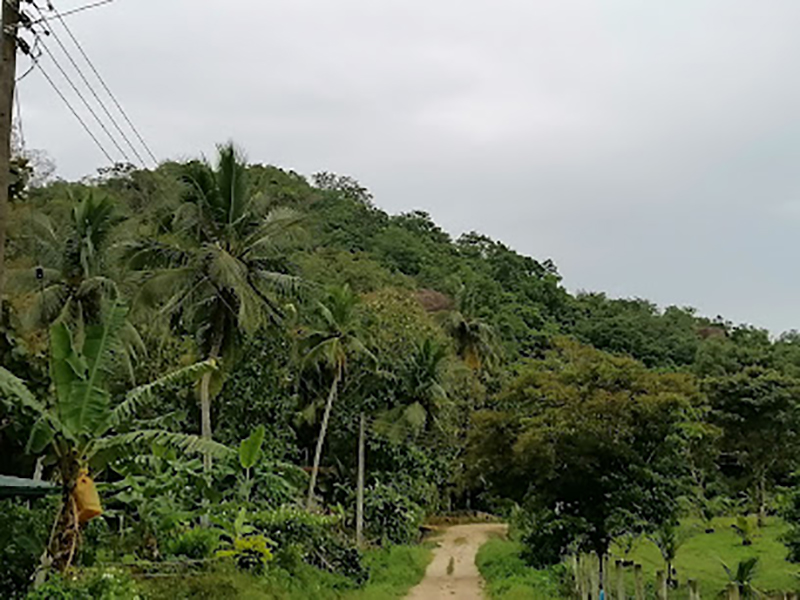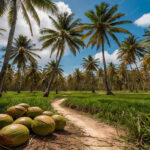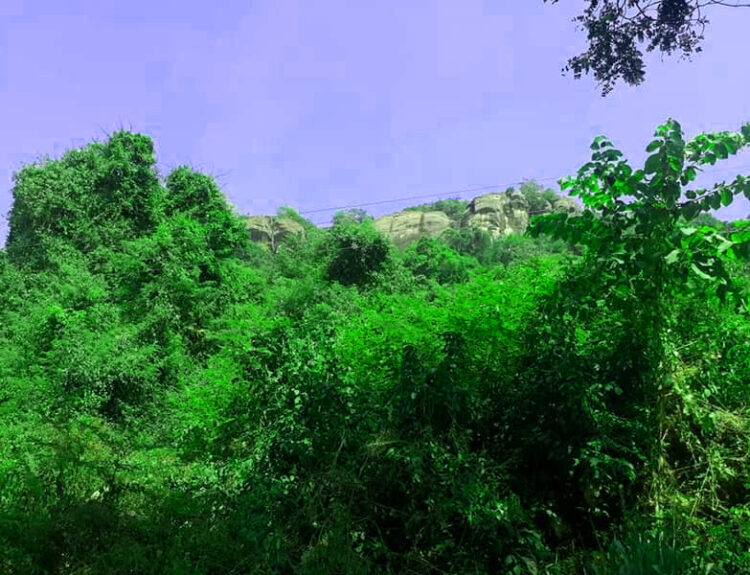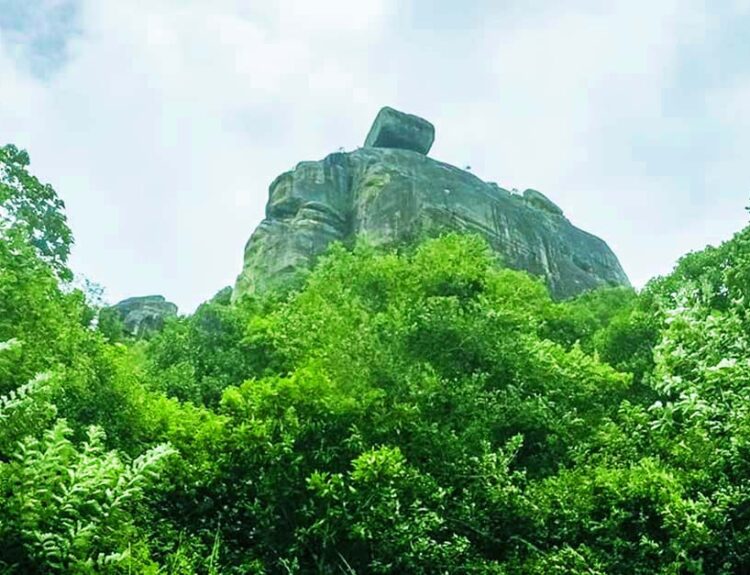Welcome to the “Mount of Ruwangiri Series,” where we will climb the intriguing peaks of the natural heritage of Sri Lanka. We will explore in great detail the historical background, ecological diversity, cultural importance, and upcoming conservation initiatives related to this famous site over the course of the next twelve parts. Get ready to be mesmerized by Ruwangiri Kanda’s spectacular scenery, abundant animals, and possibility to influence sustainable development. You will learn why Ruwangiri Kanda is more than just a hill; it is a representation of the natural and cultural riches of Sri Lanka, providing a calm haven and illuminating experience for anyone who venture up its golden slopes.
Ruwangiri Kanda, also known as the “Golden Rock,” has a long and complex history that is inextricably linked to Sri Lanka’s natural and cultural development. The hill’s creation was caused by ancient geological processes, which resulted in distinctive rocky topography and spectacular rock faces. Archaeological evidence suggests that early human communities flourished in the area, taking advantage of the hill’s natural resources and strategic vantage positions. Ruwangiri Kanda has been engulfed in local myths and tales for generations, with many attributing heavenly characteristics to its presence, making it a place for ancient rituals and festivities. During the colonial era, European explorers and settlers chronicled the hill’s beauty and included it in their maps. This period also saw the evolution of.
The term “Ruwangiri Kanda” or “Ruwangiri Mountain” comes from the Sinhalese language, where “Ruwan” means “gold” and “Giri” means “rock” or “mountain.” The name “Ruwangiri” thus translates to “Golden Rock,” reflecting the hill’s distinguishing aspect, particularly around sunrise and sunset, when the rock formations radiate a golden hue due to the angle of the sunlight and the mineral makeup of the rocks. This golden glow has captured the attention of both locals and visitors, earning the hill its evocative moniker. The term “Kanda” is the Sinhalese word for “mountain,” emphasizing the prominence and elevation of this geographical feature. The combination of these elements in the name accentuates both the visual splendor and the natural majesty of Ruwangiri Kanda, hence it a fitting.
Ruwangiri Kanda is a magnificent rock formation with importance that extends far beyond its natural shape. Ruwangiri Kanda is a pillar of early Sri Lankan Buddhism, believed to have been built by King Devanampiyathissa in the 3rd century BC, shortly after Buddhism arrived in Sri Lanka. Its presence indicates the king’s dedication to establishing the religion, as well as its potential as a pilgrimage site for early Buddhists.
However, the name itself has undertones of an even older antiquity. The name “Ruwangiri Kanda,” which translates to “the rock that the sage came from,” suggests a pre-Buddhist background. Even in previous communities, the rock formation may have carried religious significance, functioning as a site of worship or meditation. Excavated remains such as the Naga stone add to theories regarding the site’s pre-Buddhist connections.
Regardless of its actual beginnings, Ruwangiri Kanda has certainly had spiritual importance throughout history. The isolated rock top provided a sanctuary for contemplation and spiritual practice, drawing not just Buddhist monks but also sages and holy individuals from previous centuries.
Ruwangiri Kanda eventually transcends its physical form, revealing Sri Lanka’s rich cultural and religious past. Additional archeological research could reveal more about the lives of persons who used this place, potentially revealing light on religious practices and cultural beliefs from different ages. To summarize, Ruwangiri Kanda is a site where whispers of the past combine with the peacefulness of the present, a witness to faith’s enduring force and the mystery of this ancient rock formation.
Ruwangiri Mountain, also referred to as Ruwangiri Kanda, is located within the Pambe Mukalana forest area in the Kurunegala District. This enormous granite formation serves a role as diverse as its history.While historical reports claim that it was built as a Buddhist temple complex by King Devanampiyathissa in the third century BC, shortly after Buddhism arrived, the name itself hints at a deeper history. “Ruwangiri Kanda” translates to “the rock that the sage came from,” implying a possible link between a holy figure and the rock itself, which predates Buddhism entirely. It could have been a holy place for extinct civilizations.Regardless of its precise origins, Ruwangiri Kanda’s solitary top provided a natural haven for spiritual meditation. This certainly attracted not only Buddhist monks, but also sages and religious individuals from earlier centuries. Further archeological research may one day reveal the true purpose of Ruwangiri Kanda, but for the time being, its complex history adds to the charm of this interesting Sri Lankan relic.
Ruwangiri Kanda, while not commemorated by traditional milestones, has seen significant events and advancements throughout history. Its creation over millions of years is the first milestone, defining its diverse landscapes and rock formations. Another critical aspect is the discovery of early human dwellings near Ruwangiri Kanda, showing its importance as a habitat as well as a cultural or spiritual location. Ruwangiri Kanda’s cultural significance grew over time as it was integrated into local myths, tales, and ceremonies. Recognized by European explorers during the colonial period, the territory was documented and mapped, marking another milestone. Subsequent conservation efforts, tourism development, and research and education projects have all contributed to Ruwangiri Kanda’s reputation as a beloved landmark in Sri Lanka.”
Ruwangiri Kanda in Sri Lanka is a unique natural beauty site with stunning rock formations and cultural significance. It’s popular for hiking, adventure seekers, and photographers due to its stunning vistas. The hill is also promoted as an ecotourism destination, attracting eco-conscious travelers to explore its biodiversity. With support from tourism boards and local authorities, Ruwangiri Kanda remains a cherished gem in Sri Lanka’s natural and cultural landscape.
Revealing the elements of Ruwangiri Kanda is akin to removing the layers of history. Without a doubt, the central feature is the enormous rock structure that protrudes from the surroundings and has been a silent watchman for centuries.
Excavations have revealed intriguing artifacts such as a Naga stone, which suggests a pre-Buddhaic past. Given that the name “Ruwangiri Kanda” means “the rock that the sage came from,” this theory is further supported by the name itself. Are there any more hidden buildings or relics that just need to be discovered, traces of something even more ancient?
Ruwangiri Kanda’s spiritual significance may have been enhanced by other natural features found on the isolated peak. The site’s intended use could have included natural platforms, caverns, or cracks that would have provided isolated areas for meditation and spiritual practice.
This temple is located in Ruwangiri Kanda forest reserve.And it is said that this temple has been built by King Walagamba in an area where he has rested in organising army after the Chola invasion.Visit this beautiful temple but remember to keep foot prints only in this sensitive ecological area.
Prepare to be captivated by our ‘Ruwangiri Kanda Unveiled’ series! Over the next twelve articles, we’ll delve into the mysteries of this enigmatic Sri Lankan landmark. We’ll explore whispers of its Buddhist past, hints of a forgotten era, and the cultural and religious significance it holds. Join us on a journey to uncover the secrets etched in stone – Ruwangiri Kanda awaits!
